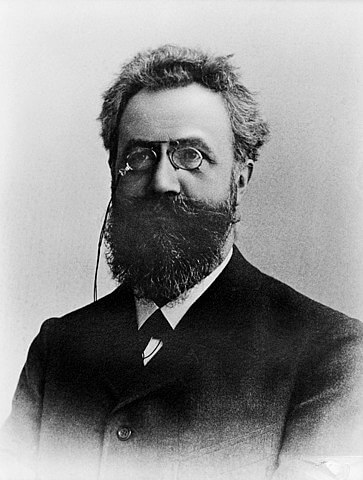Human Resources

An L&D Guide to Microlearning

06 December 2023 - 4 min read
One of the most exciting concepts to gain traction in the learning and development world recently is ‘microlearning’.
Whilst it might come across as just another hype-word, microlearning has an extensive history when it comes to learning that is only just starting to be realised fully. The rapid development of digital technology is enabling L&D departments to innovate and use it to create truly incredible employee development programmes that weren’t considered possible a few years ago.
Here’s an L&D guide to microlearning and everything you need to know about this trending topic.
What is microlearning?
Microlearning refers to a style of online learning that focuses on making learning new information easier, faster and less tiring for learners. It does this through taking a ‘micro’ approach to learning, presenting information in short, easily to absorb segments that stand alone and that can be watched as many times as needed.
Generally microlearning modules can be anywhere between 1 minute to 10 minutes long and this length helps them maximise learner attention. Microlearning makes use of a form of content delivery known as push technology that requires relatively little effort from the learner. Information is delivered directly to the student, in short bursts, without them needing to seek it out.
It’s becoming increasingly popular in the context of employee development. During the pandemic, there was a notable jump in the number of companies utilising microlearning to upskill their employees. The Brandon Hall Group’s recent L&D Benchmarking Study reported a 40% increase in the number of employers using microlearning over the course of the pandemic.
Whilst a relatively low number of employers were making use of microlearning initiatives before the pandemic a jump in that magnitude is significant and points to more and more employers becoming aware of the potential benefits of microlearning when it comes to employee development programmes.

The science behind microlearning: the forgetting curve
Learning and development can be one of those fields where there’s a lot of hype and buzz around particular concepts which ultimately turn out to be flash-in-the-pans.
Microlearning is rooted in scientific understanding about the way we learn and the way we retain information. It’s an old idea but one that is now being experimented with in new and exciting ways. It’s fundamentally different from those here-today-gone-tomorrow trends that we read a lot about in L&D media.
This fantastic blog article by Valamis goes into exceptional detail about the history and science behind microlearning and it’s well worth a read if you want a comprehensive guide to the theory.
As the article explores, microlearning has its roots in the work of influential experimental German psychologist Hermann Ebbinghaus who pioneered the study of memory way back in the late 19th/early 20th century.
Ebbinghaus was fascinated by learning and how people retain information. He conducted experiments exploring the process of learning and forgetting.
He came up with the concept of the ‘forgetting curve’. According to Ebbinghaus, people will typically forget around half of what they’ve learned within a few days of learning it, if they don’t revisit the information.
Through his experiments (in which he attempted to memorise thousands of nonsense syllables and see how many he could remember) he concluded that the rate at which someone forgets information depends on a number of factors including:
- How it was learned in the first place (the ‘mnemonic’ technique)
- How difficult the information was to learn
- Physiological factors, like stress level, sleep level, general health etc.
He ultimately hypothesised that the best ways to improve your memory when it came to learning were:
- Using mnemonic techniques (learning techniques designed to aid the retention of information)
- Repeating information that you have learned previously, based on actively recalling it
In other studies, he found that the attention span of children at school, and their capacity to learn, steadily decreased throughout the day, suggesting that the longer someone learns in one session, the less information they’ll ultimately be able to retain.
Microlearning takes into account all of these factors, presenting short bursts of information using mnemonic techniques and emphasising repetition, to ensure that the forgetting curve is reduced and more information is retained.
Benefits of microlearning
So, we now know what what microlearning is. What can it actually do for your organisation though? Here are some of the key benefits of microlearning over other formats of teaching and study:
1. It fits into modern work flows
Traditional learning, where you sit at a desk and listen to a lecturer or teacher deliver a lesson on a particular subject, is about as suited to the demands of the modern workplace as a horse and cart is to a motorway. These days, employees just don’t have the time to take significant chunks of time out of their workday to attend classroom-based study.
Microlearning is intrinsically suited to the fast-paced way that modern organisations work.
Thanks to the fact that microlearning is accessed online and is delivered in 5 minute to 10 minute bursts, employees don’t need to block out huge segments of their day to devote to learning. They can instead access learning anytime that they are free and complete it anywhere that they have access to an internet-capable device, like a smartphone, and an internet connection.
As a result, microlearning blends seamlessly into most modern work flows in an organisation.

2. It helps employees retain more information, more efficiently, than other methods
One of the key benefits of microlearning is that it’s just simply a more effective way to learn information quickly than traditional methods. With microlearning approaches, you canlearn complex information a lot faster and with more ease than with usual study formats.
It might be an old idea but it’s being adapted in new ways that make the most of the incredible opportunities we have to improve the learning experience, presented by new technology.
For example, one study cited in this article found that microlearning enabled employees to improve the speed at which they learned by around 50%.
3. It can help your organisation save money on employee development
Thanks to the low cost of the overheads, microlearning can be relatively cost-effective to implement, helping you save money on your overall learning and development budget. For example, employers in the same Brandon Hall Groups study we referenced earlier reported saving money on their training programmes as a direct result of implementing microlearning approaches.
If your department is strapped for cash and limited in the type of employee development programmes that it can offer, investing in a microlearning approach can be a practical way to ensure you’re getting the best value for money.
How to implement microlearning in an organisation
Here are a basic set of steps to take when it comes to putting in place your microlearning programme.
1. Create your microlearning proposal and submit it
The first step in implementing microlearning in your organisation is to come up with a formal proposal that you can deliver to your senior management team, requesting their support, as well as a budget to make your idea a reality. Creating a formal proposal will also help to provide more structure to your idea.
Here are some of the basic things that your proposal should include:
- Measurable objectives
- Needs assessment
- Budget
- Timeline
- Evaluation and performance monitoring procedures
2. Get buy-in from senior management and wider organisation
The only way that you’ll be able to implement a microlearning strategy at your organisation is through winning the buy-in of senior management and key decision makers. Without them on board, it’s likely that you’ll find it incredible difficult to get things moving forward.
It makes sense then to take some time and think carefully about how to present your proposal to them to maximise you chances of success.
This blog by Tech Republic has some useful, practical advice about the best ways to get a strategy approved by management.
3. Develop learning content and modules
With the foundations of your microlearning programme built, it’s time to start putting it into action by developing the learning content.
First of all, you’ll need to identify the specific content that you want your microlearning course to cover and the key information that you’d like students to learn. It’s best to try and break this down into particular sections to make the process easier to manage.
If you’ve managed to secure a decent budget, it can make sense to outsource the physical creation of the microlearning course to an external agency or specialist who can deal with the nitty gritty of designing course materials and getting it digitised.
If you’re working to a tight budget though, there’s no need to panic. There are a wide range of online learning platforms that specialise in microlearning that you can use to build your own microlearning course.

4. Monitor and gain feedback
Whilst you may think that now you’ve got approval, created the content and sorted out your delivery format you’ve done everything, you’ve got one of the most important parts of the project left to tackle – monitoring performance.
Keeping tracking of how well your microlearning strategy is working is crucial when it comes to refining the learning programme and making it as effective as possible. Analysing its performance will help you to identify key successes and key challenges, allowing you to refine the offering and build a case of evidence to support its use over the long-term.
People have written an inordinate amount of information about the best ways to monitor performance and to assess the effectiveness of specific policies, so we won’t go into too much detail here. The key thing to remember is that monitoring should be continuous and should always be focused around justifying the ROI that your organisation has expended in funding the microlearning programme.
We will offer a few pieces of general advice to get you started though:
- Identify key metrics (a fancy, tech word for ‘measurements’) to track
- Identify key performance indicators (KPIs) to track
- Create a system of user feedback
- Analyse the data you collect: what does it tell you about the programme’s performance?
- Write up your findings in a regular report and disseminate this to key stakeholders
Learning how to learn
We hope that our L&D guide to microlearning has helped to improve your understanding of this rapidly developing trend in the employee learning field. Are you ready to put what you’ve learned to the test in your own organisation? Let us know!
Improve your learning and development practice with a dedicated CIPD qualification that you can complete 100% online. Download your free CIPD course guide here and start your journey today.
Download Your Free CIPD Course Guide
Get information on our CIPD courses
Share this post












